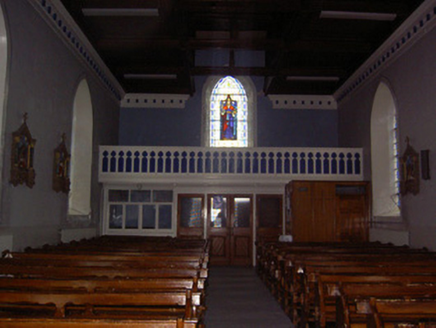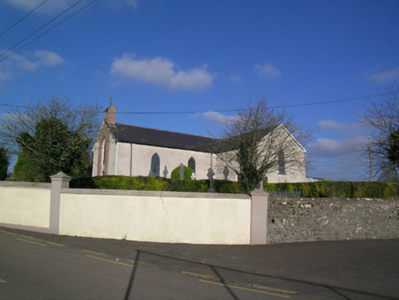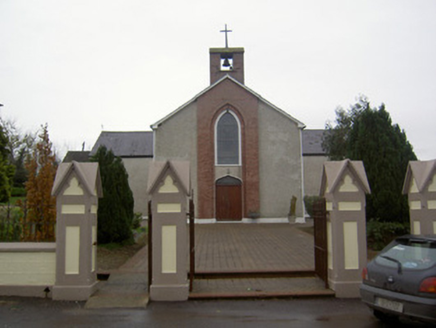Survey Data
Reg No
20901918
Rating
Regional
Categories of Special Interest
Architectural, Artistic, Social
Original Use
Church/chapel
In Use As
Church/chapel
Date
1830 - 1850
Coordinates
177095, 109431
Date Recorded
25/10/2006
Date Updated
--/--/--
Description
Freestanding cruciform-plan gable-fronted Roman Catholic church, built c. 1840, facing south-west, with three-bay nave, and with lower sacristy to north-east elevation. Pitched artificial slate roof with recent pointed arch openwork bellcote to gable-front, with render cross finial, and some cast-iron rainwater goods. Painted roughcast rendered walls with recent red brick breakfront to gable-front. Pointed arch window openings, with render surround to window in upper level of gable-front, and Y-tracery to north-east window, having stained-glass windows throughout. Tudor-arch door openings to gable-front and to south-west sides of transepts, having double-leaf timber battened doors. Parquet timber floor and geometric and encaustic tiling to interior lobby. Interior of church proper has timber-clad ceiling with heavy cornice moulding, decoratively carved timber railings to gallery over entrance end of nave, with glazed timber screen wall below, marble altar and backdrop, timber pews and render religious statues. Painted rendered and roughcast rendered boundary walls terminating in square-plan decoratively panelled piers with caps having gables to all faces and wrought-iron gates and railings. Memorial millennium oak to west with plaque to wall.
Appraisal
This Roman Catholic church is an example of the incorporation of the Gothic Revival style into local churches, as hinted at through the use of pointed arch window openings and bellcote, while a restrained and sedate façade maintains a more modest rural charm. The contrasting parquet timber floor and geometric and encaustic tiling create a pleasing visual and textural contrast to the interior, while the cornice mouldings highlight a timber-clad ceiling reflecting, to a degree, the penchant for dramatic showcases of carpentry seen in larger churches. The building is a manifestation of the emerging confidence of the Catholic Church in early nineteenth-century Ireland. It is a key landmark in the village grouped as it is with a nearby handball alley and the village school.





